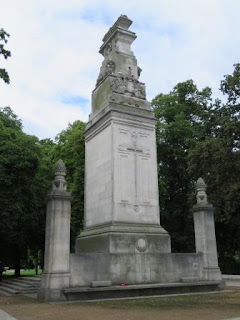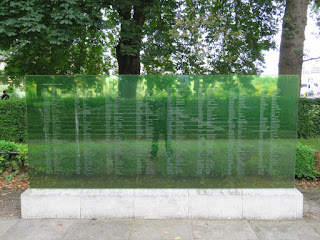Tidridges in Eire
It was over 15 years ago when I first came across a reference on the Internet to someone with the surname Tidridge living in Doneraile. My first question was “Where is Doneraile”? The answer to this question is that it is a small village about 30 miles north of Cork in southern Ireland. My next questions were “Who are these Tidridges in Eire?” and “Are they related to the Tidridge family group living in Bishop’s Waltham in the early nineteenth century?”The Tidridges of Bishops Waltham Hampshire
William Tidridge (1845 – 1929)
On 22 December 1870 William signed up for the army for 12 years in the Rifle Brigade, giving his age as 19 years 2 months. In fact he was 25years when he enlisted, but I have no idea why he would have lied about his age or alternatively how he could be so confused over his age. The 1871 census sees him in the 2nd Battalion of the Princes Own Rifle Brigade at Hougham, Dover still claiming to be 19 years old. At the end of William’s twelve years’ service he re-engaged in the army for a further 10years. Throughout his career he gained promotion, first to corporal in 1874, Sergeant in 1878, Colour Sergeant in 1882. He was awarded the Good Conduct Medal on 25 May 1889 and the Ashantee Medal and Clasp for Coomassie. He was finally discharged from the army on 16 November 1891.
Life in Cork
It was on 27 June 1882, while he was still in the army, that William married Mary Baker Brown in Cork. In 1901 and 1911 census William and Mary were living at Strawberry Hill Lane in Cork with their children. William and Mary had ten children. All of these were born in Cork, with the exception of Ann, William and Elizabeth who were born in Westmeath 150 miles north of Cork. The children were:
• John Harry (1883 – 1946)
Born 18 January 1883. Married Evelyn Davis in Elham Kent in 1911. John and Evelyn had two sons Lionel and William born in Elham. John served with Lancashire Fusiliers in World War 1.The family emigrated to Canada after the war.
• Ann Amelia (1885 – 1930)
Born 15 February 1885. Known as Annie. Married Thomas Joseph Kerr September 1914 in Cork and they had 6 children.
• William Alfred (1887 – 1969)
Born 5 September 1887. Known as Bill. Married Helen Geraldine Rea in June 1909 in Cork. They had no children. They emigrated back to England.
• Elizabeth Jane (1889 -1956)
Known as Lizzie. Born 5 July 1889. Died in Cork aged 67 in Sept 1956. Never married. She did however look after her sister’s Ann’s children when he sister died in 1930.
• Mary Alice (1892 ?)
A twin known as Molly. Lived in Cork. Married Richard Osmond Powell in September 1920 and had two sons.
• Louisa Francis (1892 -1942)
A twin known as Lou. Married Rev John Hartley Roundhill in September 1922 in Cork. They had no children.
• James Alexander (1894 – 1961)
Known as Jim. James served in the Royal Garrison Artillery in 82nd Battery in World War 1. He was discharged on health grounds. He married Mary Dymphna Walsh (May) of Doneraile in Kensington, London in 1925. They then moved back to Eire. They had no children.
• Ruth Lydia (1896 – 1977)
Lived in Cork and never married.
• George Tidridge (1898 – 1898)
Died as a baby
• Harriet Edith ( 1899 – 1980)
Known as Edie. Married George Harley Bishop in December 1938 in Cork and had one daughter
Tidridges of Doneraile
“Tidridge: This was a very tasty shop run by Mr James Tidridge and his wife May, whose maiden name was Walsh. They sold newspapers and magazines, comics and journals of all description (and one-penny ice cream - either "pink or white"). He also did groceries and cigarettes and confectionery. He came to Doneraile as a carpenter to the mill and was a very able craftsman.”
So indeed this family in Doneraile came from Cork and originally from Bishops Waltham family. It would appear there are no longer individuals with the Tidridge surname living in Eire, however some of the descendants are still there and we would love to hear from them if they read this.






